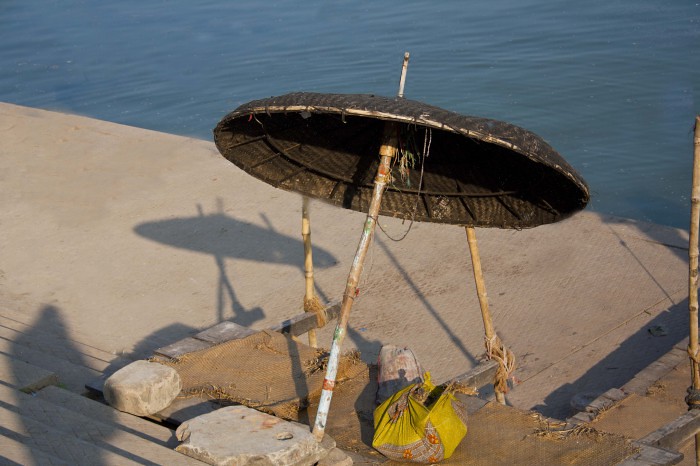
“Kashi Ke Kankar Mein Shiva Shankar” the literal meaning is Lord Shiva is in every pebble of Kashi. Yes, to some extent it is true. But as you walk through the lanes and by lanes, you will find important Mosques and Sufi Shrines there, these are also significant parts of Varanasi or Benaras, making it an equally important Islamic city as well even it is known as a Hindu City. I have been there for only 2/3 days and it was impossible for me to explore the authentic colours of the city in a little span. Although, I have tried so much, at least to touch those important places. Among everything, the most important are the Ghats (Embankment of on the riverfront) on the river bank of Varanasi. It is truly a fascinating and charming city. The city is special for all, but I feel like, especially for Bengalis and there are numerous reasons for that but among them, one reason is definitely Satyajit Ray’s Film “Joi Baba Felunath”, which connects Bengalis with Varanasi. The film had been shot extensively in Varanasi and its surrounding areas. The film has a huge impact on the mind of every Bengali. When I was there, I went on searching for those shooting locations. Luckily, I found one shooting location from the film there. One very important sequence of the film “Joi Baba Felunath” was filmed there ie Darbhanga Palace and its adjoining Ghat.
The majority of the Ghats of Varanasi are associated with legends or Mythologies and many ghats are also associated with Empires like Marathas, Peshwa, Holkars, Bhonsles, and Scindias. Most of the Ghats were erected around 1700 AD. Although in 800 BCE, the main city was located near the northern bank of RajGhat, where river Varana flows into the Ganges. The dock was also important and used as a trade route from Bengal to northern regions.
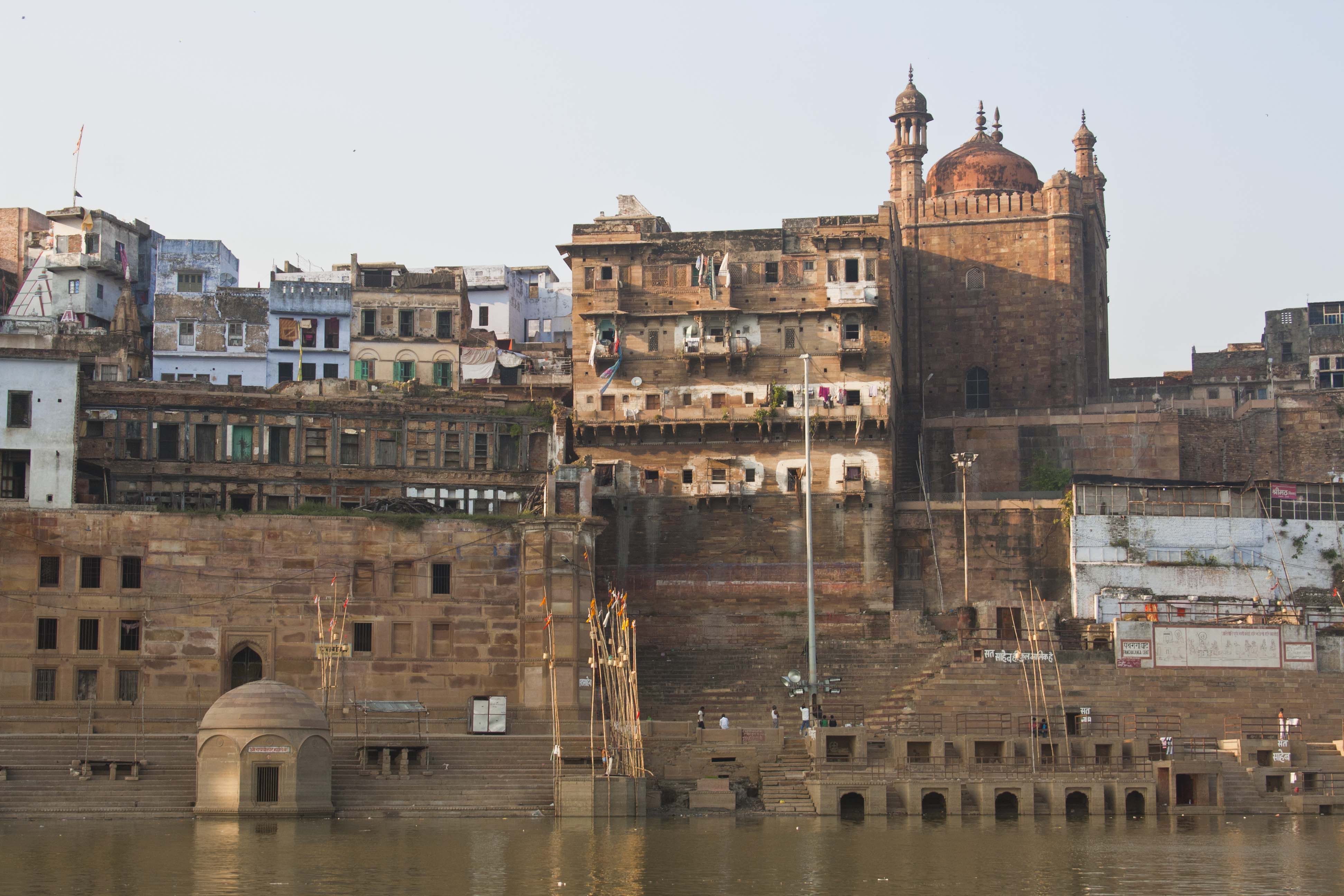
1. Darbhanga Ghat – – This Ghat is located next to south of Dashashwamedh Ghat, also next to Rana Mahal Ghat. This ghat is actually an extension of Munshi Ghat, it had been purchased by the King of Darbhanga. The extended part of it known as Darbhanga Ghat. Beautiful Darbhanga Palace is situated over there, 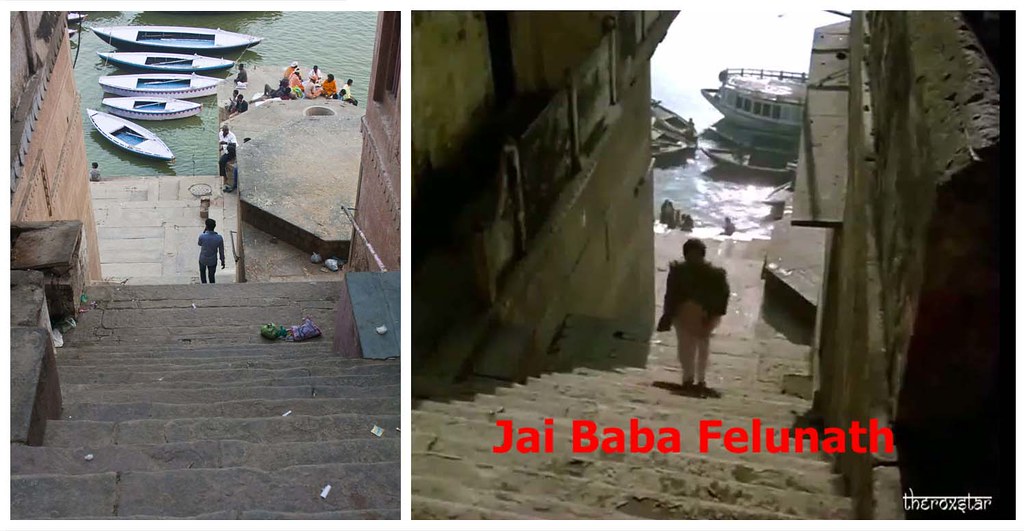 an intricate and outstanding structure. It was erected in 1915 by the King of Darbhanga, Bihar. But at present, it has been sold to the private promoter and may be now, it is converted into a luxury hotel. Because when I went there, it was under renovation. I have tried to get into the palace but security didn’t allow me. An important sequence of Satyajit Ray’s Film “Joi Baba Felunath” was filmed there, as I am very fond of Ray’s Films, I couldn’t resist myself. I just wanted to see the place on my own eye and that’s the reason I have tried much to convince them. Unfortunately, couldn’t get in. Finally, I returned with a broken heart.
an intricate and outstanding structure. It was erected in 1915 by the King of Darbhanga, Bihar. But at present, it has been sold to the private promoter and may be now, it is converted into a luxury hotel. Because when I went there, it was under renovation. I have tried to get into the palace but security didn’t allow me. An important sequence of Satyajit Ray’s Film “Joi Baba Felunath” was filmed there, as I am very fond of Ray’s Films, I couldn’t resist myself. I just wanted to see the place on my own eye and that’s the reason I have tried much to convince them. Unfortunately, couldn’t get in. Finally, I returned with a broken heart.

2. Assi Ghat – This is the city’s most popular and spiritually important Ghat. According to Hindu mythology or if we refer ancient texts, Assi was a rivulet that flowed to the river Ganges. The presence of two sacred rivers Assi and Ganges made this place auspicious for bathing. There is another faith among Hindus, associated with Assi Ghat, believed that Tulsidas left this place for heavenly abode. There is a Shiva Lingam and a Hanuman Shrine in the Ghat under a Peepal Tree (Ficus Religiosa) that has Puranic significances. Apart from this, this Ghat is very spacious and the huge staircase that attracts visitors. Not only it’s popular among tourists, equally liked and loved by the locals. Its view from northward to Malviya Bridge and Pontoon Bridge are just superb, especially at dusk. Every day at dusk one can notice a festive atmosphere, where thousands of people arrive on a daily basis to chat on the steps of the ghat and take boat rides on the Ganges. The boat rides are also popular among tourists and locals.
3. Manikarnika Ghat -This is one of the among two cremation ghats of the city. According to the Hindu mythology, this is especially sacred and if anyone cremated here receives Moksha after the death. There is a myth which describes, Shiva, speaks Taraka Mantra in the ear of the dead so that, they can cross the river called Boitarani. According to the beliefs of Hindus, bathing here is very sacred. Actually, this ghat is divided into two sections, one section is used as a cremation ground and another for sacred baths. There is a Kund or Pond called Manikarnika Kund and according to Hinduism, this pond was built by Lord Vishu for the bath of the couple Shiva and his wife Parvati.
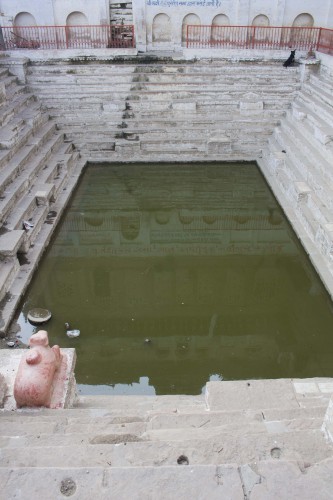
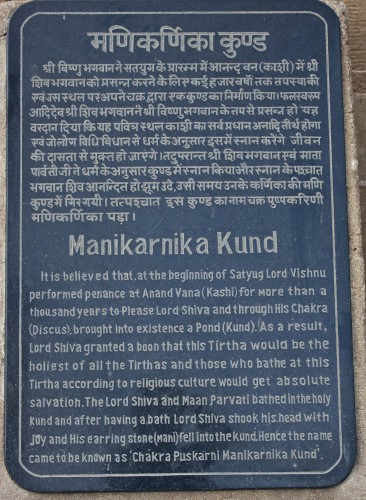
4. Dashashwamedh Ghat – It is commonly referred as a “Main Ghat” of Varanasi by the tourists and even by the guides. This is the 35th ghat of Varanasi. Vishwanath Temple, one of the spiritually important temple is located near to this ghat. You can see famous Bamboo Umbrellas all along the Dashashwamedh Ghat. Under the bamboo, umbrellas are the place for the priests known as Pandas, Ghatis and Tirtha Purohit. They assist pilgrims for conducting various Hindu rites and rituals.Two Hindu legends are associated with the name Dashashwamedh. According to one legend, Brahma sacrificed ten horses during Dasaashwamedha Yagya which was performed here. Another one, Lord Brahma created this place to welcome Shiva. Anyway, this ghat looks magnificent, especially during the time of Ganga Arti at sunset. An organization called Ganga Seva Nidhi conducts Ganga Arti on a daily basis.
5. Anandamayi Ghat – This is one of the famous ghats in Varanasi, named after a famous woman saint, Anandamayi Maa, born as Nirmala Sundari on 30 April 1896 to Bipin Bihari Bhattacharya and Mokshada Sundari Devi. She was known for his ability to heal all kinds of mental and physical ailments by her aura. Many famous personalities like Former Prime minister of India Indira Gandhi, famous French filmmaker Arnaud Desjardin and famous dancer Uday Shankar were her followers. Many scholars were attracted towards her spiritual teaching, specially Mahamahopadhyay Gopinath Kaviraj and Triguna Sen were among her early follower. Her Ashram for girls stands just above the ghat.
6. Raj Ghat – This ghat was an important dock for the trade, along with the northern road Grand Trunk road and this road continues over the Malviya bridge, which connects to Kolkata. Malviya Bridge was built in 1887 and at that time, it was known as Lord Dufferin Bridge. A huge white temple which dedicated to Raidas situated on this ghat. Raidas (1418 – 1547), who was a poet-saint and he preached personal devotion without idols.
7. Tulsi Ghat – This is another sacred ghat of Varanasi, it named after poet-saint Tulsidas and he lived there during those days, while he was writing Ramcharitmanas (Ramcharitmanas is the translation of Sanskrit epic, Ramayana into the accessible version in vernacular ). It is believed that he built this ghat by the 16th century and also established a monastery, a Hanuman Temple, and an Akhara, just above the Ghat. Every year, during Ramlila, which falls in Ashwin, (September – October) Ram’s fascinating stories are enacted over many nights and during that time, Tulsi Ghat converted to one of the stage used for the Ramlila performances.
8. Harishchandra Ghat – This ghat is named after Maharaja Harishchandra, whose name is associated with “Truth” or Satya. It’s believed that, once Rishi Viswamitra asked for Dakshina (Ritual fee) from Harishchandra, he generously gave his entire kingdom to him. Viswamitra accepted the kingdom but was not happy with the fee. To be true to his word, Harishchandra sold his wife and son into slavery and he traveled to Kashi. In Kashi, he devoted himself as a worker in a crematorium. One day his wife arrived at Kashi with the dead body of their son. His wife could not afford the crematorium fee but Harishchandra turned them away. Gods were watching Harishchandra carefully and were pleased with strengths of his character. Finally, God returned his kingdom and family to him. Harishchandra Ghat is the oldest ghat and one of the among two cremations ghats of the city. This ghat is even older than Manikarnika Ghat and called as “Adi Manikarnika” or “Original Manikarnika”.
9. Ahilyabai Ghat – This Ghat is named after Queen or Rani Ahilyabai of Indore and built in the 19th Century. Rani Ahilyabai who built many temples in Varanasi including famous temple Vishwanath Temple and Amethy Temple on Manikarnika Ghat.
10. Munshi Ghat – This Ghat is named after Sridhar Narayan Munshi, a finance minister of Nagpur Estate. It was established in 1912 and in the year of 1915, it had been purchased by the king of Darbhanga. Later on, it has been extended and the extended part is called Darbhanga Ghat.
11. Dr. Rajendra Prasad Ghat – Dr. Rajendra Prasad was the First President of the Republic of India (1950- 1962). To honor him, this Ghat is named after him.
12. Bajirao Ghat – This ghat was built by Bajirao Peshwa in 1735 AD, and named after him. He also erected a palace there. During the construction of the ghat, due to some fault in the construction, the entire ghat was abandoned. Queen of Gwalior Rani Baijabai gets it repaired and rebuilt the entire ghat in the year of 1830.
13. Raja Ghat – This Ghat was built by First Maratha King Bajirao Balaji in 1720 AD and old name of the ghat was Amrita Rao Ghat.
14. Manasarovara Ghat – Manassarvar is a Himalayan Lake and this ghat is named after the lake. This ghat was built by Maharaja Man Singh of Amber (Presently, Rajasthan).
15. Narada Ghat – This ghat is named after Narada, a very important character from Mahabharata. Earlier, this was known as Kuvai Ghat and built by Dattatreya Swami in 1788.
16. Man Mandir Ghat – Rajput King of Amber Raja Savai Man Singh built a palace and this ghat in the year of 1585 AD and its named after him. The palace is very elegant and there is an astronomical observatory on the roof built by Man Singh’s successor, Jai Singh during the period 1710-1737AD. The old name of the ghat was Somesvara ghat.
17. Bhonsale Ghat – The Maratha rulers of Nagpur (Maharastra) built a palace and this ghat in the 19th century. The palace is made of sandstone and the height of the palace is breathtaking. Two temples are there on the roof of the palace, one dedicated to Shiva, and other to Vishnu.
18. Prayag Ghat – This ghat represents Prayag or Allahabad. Prayag is being considered as the holiest city in Hinduism as it’s location on the Triveni Sangam or confluence of Ganga, Yamuna, and Saraswati.
19. Dandi Ghat – This ghat is named after a saint, who is known for carrying his Dandi (Dandi or Danda mean Stick). This is actually dedicated to the followers of the Dandi Panths. Here you can find the Dandi Temple, located adjacent to the Ghat.
20. Hanuman Ghat – Very easily understood that this ghat is named after God Hanuman. According to Ramayana, Hanuman was Ram’s devotee and under his supervision, monkey brigade built a bridge across to Lanka. A temple of Ruru (Dog Form of Bhairav) is there and it is a very famous temple among locals.
21. Shivala Ghat – Above the staircase of the ghat there is a Shiva Temple and this ghat is named after the Shiva temple. Shivala is also a neighborhood, extended part of the of the ghat and populated by South Indians community, they migrated over the last two centuries in Varanasi. Apart from their homes, there are many Monasteries, Temples, and Ashramas.
22. Vachcharaj Ghat – This ghat is very special for Jains and Jainism began to blossom here around 6th century BCE along with Buddhism. Vachcharaj was a Jain banker and his contributions were responsible to established Banaras (Varanasi) as a center for trade. He built this Ghat in the 19th century and it named after him. Above the stairs, there is a narrow place, which is the birth place for Suparshvanth, who was the Seventh (The 24th Tirthankara was Mahavira, who lived in 6th Century BCE and a contemporary of Lord Buddha)Tirthankar (Tirthankaras were Jain’s Spiritual Leaders, also called Jinas or Victorious once) for the Jains. Just above the wall, there is a Golden spire which indicates a Jain Temple and a Jain Ghat.
23. Nishadraj Ghat – Nishadraj is the deity of boatmen and fisherman. Also, a mythical character from the epic Ramayana. According to Ramayana, he was the chief of the boatmen, who helped God Ram, Sita and Laxman to cross the river Sarayu. A small temple of Nishadraj is situated little high above the ghat.
24. Panchakota Ghat – Panchakota or Panchkota Ghat was built by the King of Panchkota, Bengal in the 19th century. Although, It has some historical relevance but spiritually has lesser relevance. King also constructed a palatial building on the top of the ghat and there are two Shiva temples adjacent to the building.
25. Prabhu Ghat – Maharaja Ishwari Prasad Narayan Singh saheb Bahadur from Narayan dynasty who ruled Banaras 1822 to1889. During Indian mutiny in 1857, he remained loyal to the British and he was awarded Maharaja title. Prabhu Narayan Singh was the nephew and adopted son of Ishwari Prasad Narayan Singh, who ruled in the period of 1889 to 1931. This ghat is named after Maharaja Prabhu Narayan Singh.
26. Chet Singh Ghat – First Maharaj of Banaras was Balwant Singh and his illegitimate son was Chet Singh. Chet Singh became Maharaja by bribing the Nawab of Awadh and secured his legacy over Balwant Singh’s nephew Mahip Narayan Singh. Chet Singh’s legacy followed by political squabbles with Governor General Warren Hastings. In the year of 1781, Warren Hastings sent his army to Chet Singh’s fort and Chet Singh managed to escape, while Hastings’s army was fighting outside the fort. Anyway, this Ghat with a magnificent fort like palace is named after him.
27. Pande Ghat – This Ghat is named in 1807 after a legendary wrestler Babua Pande. He established an Akhara above the steps of the ghat. Presently, only dhobies and boats are to be seen here.
28. Digpatia Ghat – This Ghat and along with stately palace were built by the King of Digpatia in Bengal in the year of 1830.
29. Chauki Ghat – This ghat is very popular among locals of Varanasi. The temple of Hanuman and Nag Devta under a Peepal (Ficus Religiosa) tree is very famous. This is the entry point for the Kedar temple. But the ghat is famous for some locals used this place for playing chess and some used this place for taking nap. On the lane above the ghat, there are several authentic south Indian Restaurants.
30. Chausathi Ghat – Chausathi meaning in Hindi is sixty-four and at the top of the ghat there is a temple of 64 Goddess. The temple enshrines 64 statues of Yoginis (Yoginis is lady mates of Goddess Kali).
31. Rana Mahal Ghat – The king of Udaipur (Rajasthan) Rana Jagat Singh built a palace along with this Ghat in the year of 1670 AD. The architecture of the palace is a perfect example of Rajasthani style of architecture. Rana Mahal Udaipur Estate trust is taking care of the Ghat and the palace.
32. Adi Keshav Ghat – Further north beyond the Malviya Bridge is Adi Keshav Ghat and there is a Adi Keshav temple with Shiva linga and an image of Vishnu.
33. Naya Ghat – Naya mean New and this ghat was built by Peshwa Amrit Rao and dedicated to Lord Ganesha. The ghat is one of the main docks of Varanasi. The stairs led up to a wide lane called Gola Gali. At the bottom of the stairs of the ghat stands Vachcharaj Ji’s haveli or mansion.
34. Ram Ghat – This is one of the popular ghats among bathers and there is a small temple, specially dedicated to Lord Ram. According to epic Ramayana, Ram is an incarnation of Lord Vishnu. There are many deities in the temple but Ram stands on the higher row with his wife Sita and brother Lakshman.
35. Lakshmanbala Ghat – This ghat is named after Lord Ram’s brother Lakshman. Lakshman is worshiped and loved for his loyalty to his brother Ram. A temple stands there called Lakshmanbala Temple which is dedicated to Lakshman and the present condition of the temple is too poor, as it is collapsed partially.
36. Badri Narayan Ghat – This ghat was built by the state of Gwalior and there is a temple of Badri Narayan of the Himalayas, is named after the temple. Ghat was also known as Mahatha/ Matha or Balabai Ghat, as Balabai of Gwalior had patronized to build this.
37. Riva Ghat – This Ghat built by King of Riva and also his palace called Riva Kothi. The palace has two magnificent gateway flanking a central doorway. Presently, it’s converted to students hostel of Banaras Hindu University for students studying music.
39. Mir Ghat – In the year 1735 this ghat named after Mir Rustam Ali, who was a popular tax collector. Even his name appears in Holi and Chaiti ( Two forms of seasonal folk singing).
40. Nepali Ghat – Nepali Ghat is famous for Nepalese Temple on the ghat. Nepalese King of the Gorkha Dynasty built this temple in the 19th century, during that time Varanasi was popular with Nepalese. The architecture of the temple follows the architecture of Pashupatinath temple, which is situated in Kathmandu, Nepal. This temple is built on a square platform and the pillars are decorated with erotic images. An idol of Pashupatinath (Pashupatinath is a manifestation of Shiva) is installed in the inner sanctum of the temple. Ticket is required to visit this temple.
41. Karnataka State Ghat – This ghat is built by the state of Mysore or Karnataka. A glorious building extending over the ghat is now a guest house and run by Karnataka State Government.
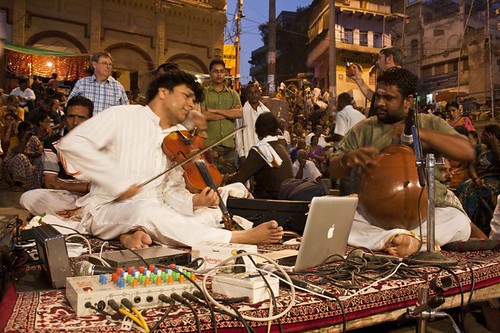
Dance and Music Festivals on Ghats
Bhurba Mangal Concerts – This festival is held on the first Tuesday after the festival of Holi.
Where – Dashashwamedh Ghat and all ghats of Varanasi.
Sankat Mochan Music Festival – Every year during the month of Chaitra (March-April) this festival is held at Sankat Mochan Temple near Durga Kund with local and national artists performing on the stage.
Where – Sankat Mochan Temple near Durga Kund.
Ganga Mahotsav Music Festival – On the last night of the fortnight in the month of Kartik (November – December). Where – Dr. Rajendra Prasad Ghat.
Dhrupad Mela Music Festival – Every year after the festival of Maha Shivratri a free public music festival is held for three night and it celebrates Indian Classical Music.
Where – Tulsi Ghat
Durga Mandir Music Festival – Every year during the month of Bhadra (August – September) Durga Temple hosts three nights classical music and dance festival with local and national artists performing on the stage.
Where – Durga Mandir, Durga Kund.
How to reach
By Air
Varanasi is well connected to all major cities of India by Air. There are many domestic flights to and from Varanasi to all major cities. The nearest airport is Varanasi airport known as Lal Bahadur Shastri International Airport. It is located at Babatpur, about 18 km north-west of the city, Varanasi.
By Train
Main railway station is Varanasi Cant.
References
1) Hindu Pilgrimage by Sunita Pant Bansal
2) Banaras (Varanasi) – The City of Gods by Students Academy
3) Varanasi by N. Chatterjee
Special Thanks to Samrat Dey Sarkar, Without his help it couldn’t be possible for me to explore those Ghats.
Copyright © BongBlogger you can share this post subjects to the conditions that please give due credit to Author Indrajit Das and do not alter before sharing. Request do not Plagiarize.
If you found your photographs here and have issues with that please E-mail me with your requests, I will remove your photographs from the public domain.


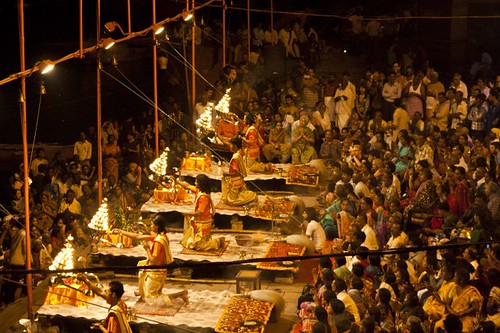
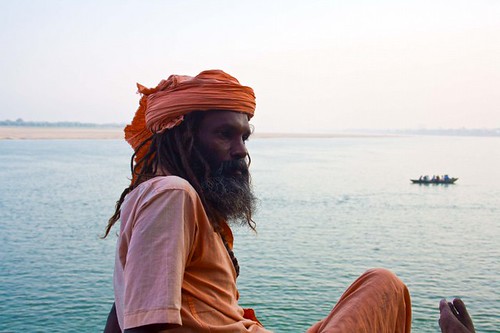

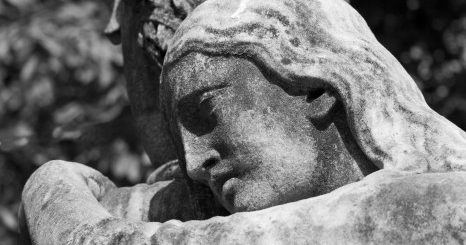
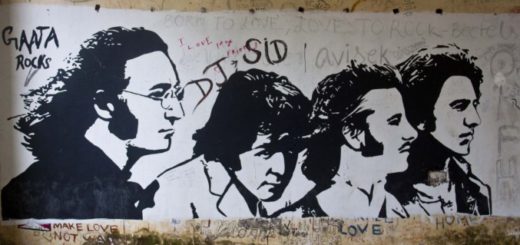
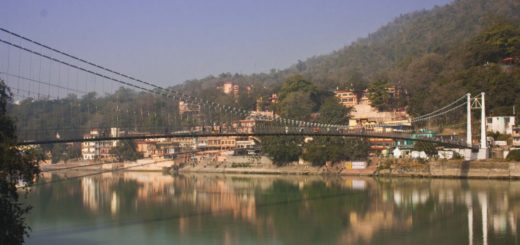
Tremendous info on Varanasi.
Thank you so much
Terrific post. Loved reading it. Very informative and a must read for anyone travelling to Varanasi.
Thank you Sumit
Great to read. Thanks for the post.
Thank you so much
Very interesting post. Thank you
Just saw the amazing movie Massan by Neeraj Ghaywan.
Was searching information on Ghat and let me tell you all i could found was just here. Many thanks
Thank you so much for stopping by my blog.